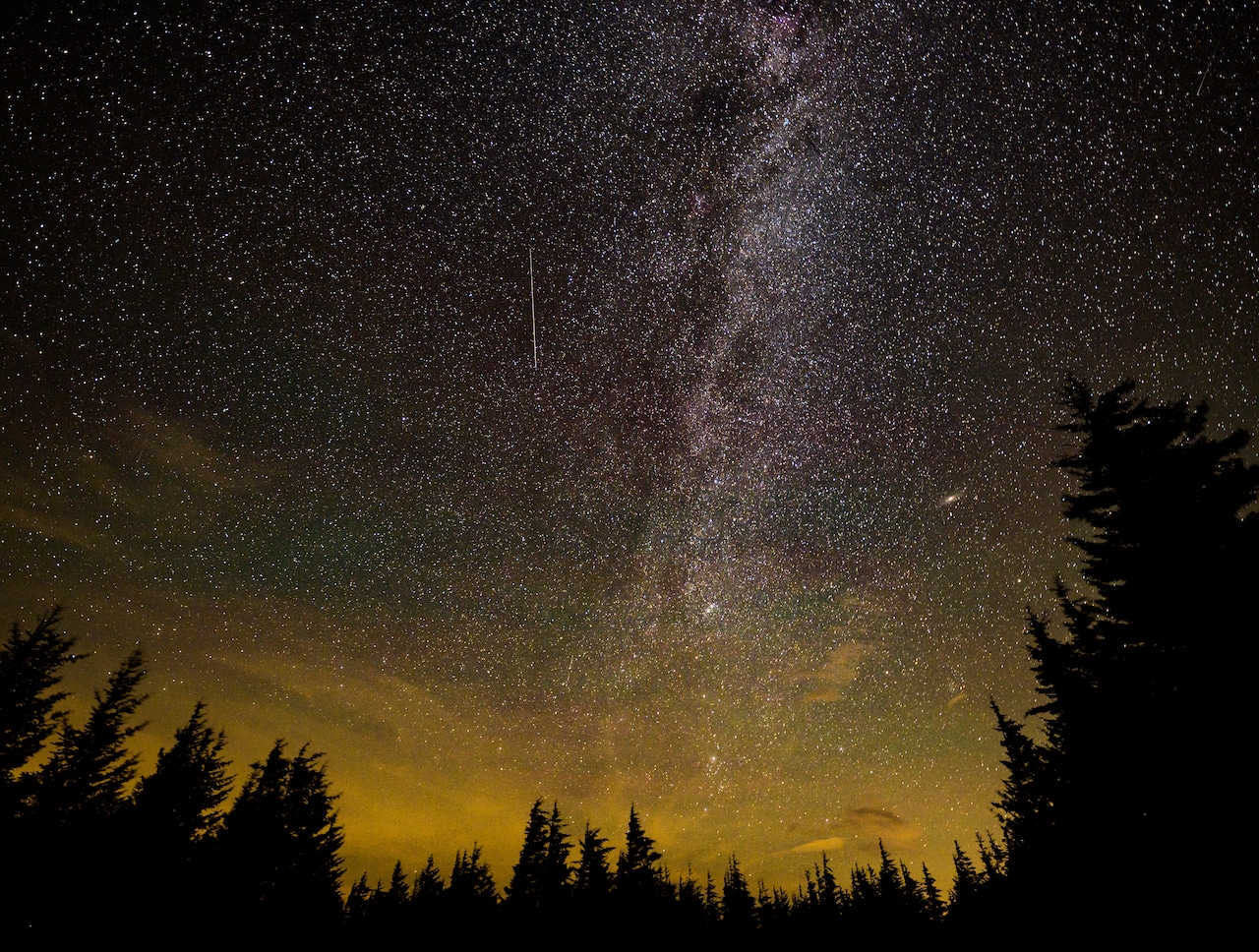An incredible stargazing tool that can help you see planets, galaxies, and even the moon like never before may already be stashed somewhere in your home: a simple pair of binoculars.
Looking at the sky through binoculars on a clear, dark night can greatly magnify what is visible, revealing depth and sparkling details that are otherwise impossible to see with the naked eye – so make sure you bring one on your next summer adventure to look at the stars.
“A lot of people just don’t associate binoculars with the sky,” says John French, editor of the Michigan State University Abrams Planetarium’s monthly Sky Calendar. “They think you have to have a telescope. But binoculars are so much more convenient and useful in many ways.”
For starters, binoculars are more portable and cheaper than a telescope, French says. They’re also simple: Compared to the time-consuming setup required with many telescopes, all you have to do is step outside with a pair of binoculars and look up.
Furthermore, even though binoculars may not be as powerful as telescopes, a good pair of binoculars with steady hands can still reveal an awe-inspiring array of objects in deep space, such as unfathomably distant, densely packed star clusters or ancient craters on the surface of our moon. .
Of course, not all binoculars are the same, and your ability to see certain celestial highlights won’t be as great if you use compact sports binoculars, for example, as opposed to more powerful optics. But you don’t have to go high-end to be jaw-dropped by the splendor of the night sky; even bird binoculars will do.
To start, it can help to have an idea of what’s currently happening in the night sky in your part of the world. Many stargazing apps do just that, but for planning purposes it’s hard to beat the Abrams Planetarium Sky Calendar, which acts as both a map and a calendar, looking ahead to astronomical features worth watching.
Once you get your bearings, here are a few gems your binoculars can reveal:
The moons of Jupiter: With binoculars you should be able to see four of Jupiter’s moons, known as the Galilean moons. These moons, named Io, Callisto, Europa and Ganymede, will appear as small dots right next to Jupiter, which itself appears as a very large, bright star. These moons move very quickly, so you can look back the next night to see how they have changed position.
The rings of SaturnAlthough not powerful enough to clearly display Saturn’s mesmerizing rings, many binoculars can reveal these dusty, icy bands as a sort of faint bulge on either side of the planet’s orb – which, just as we see them now, once attracted attention pulled off the planet. great 17th century astronomer Galileo. “Binoculars today have about the same power as Galileo’s telescope, and when Galileo looked at Saturn he could see that there was something different about it,” French says. “He thought, ‘oh, maybe Saturn has ears.’ Then they got better telescopes and quickly ruled that out. But Saturn had ‘ears’ for a short time.” With binoculars you can look for the exact same ‘ears’ that Galileo once looked at.
The phases of Venus: Like our moon, the planet Venus has phases, causing it to wax and wane in illuminated shapes that range from a full disk to a thin crescent. Although some binoculars are best seen through a telescope, they may be able to see this fascinating cyclical image.
Messier objects: Cataloged by French astronomer Charles Messier, this list of more than 100 deep space objects, such as star clusters and nebulae, could provide amateur astronomers with something of a treasure hunt in the night sky. A good example: During the months that Orion is overhead, look for a blurry point of light just below Orion’s belt and then find it again with binoculars. This is the Orion Nebula, also known as Messier 42: a huge cloud of dust and gas in which thousands of stars are being forged.
A close-up of the moonFinally, while stargazing is generally best under dark, moonless skies, nights when the moon rises can provide an opportunity to better appreciate Earth’s closest celestial companion. With binoculars you can observe craters, dark moon seas and even the famous Sea of Tranquility, the first place explored by humans on another celestial body. You may never look at the moon — or the entire night sky — the same way again.
